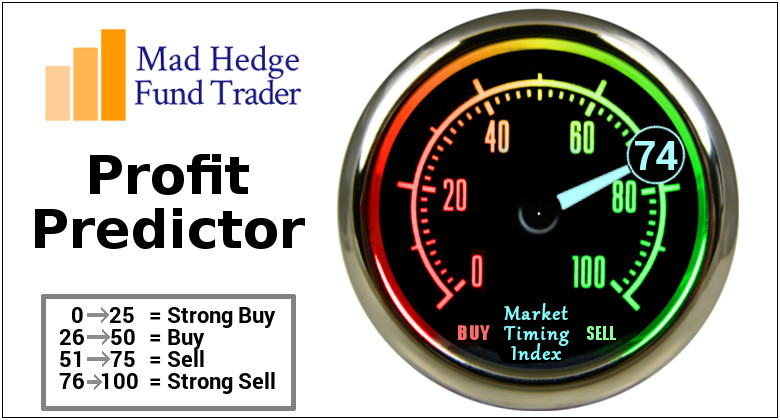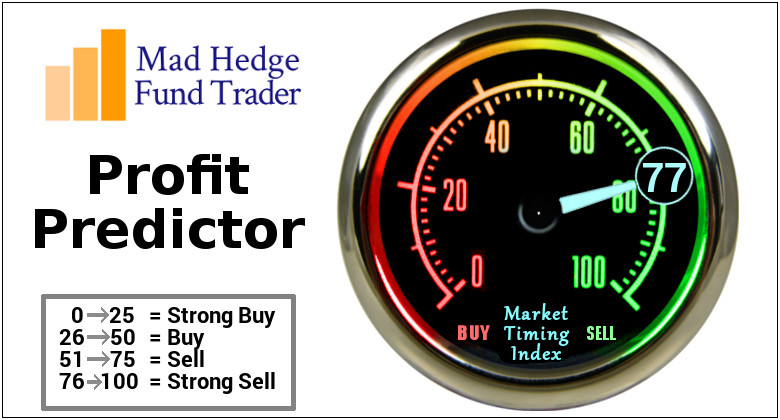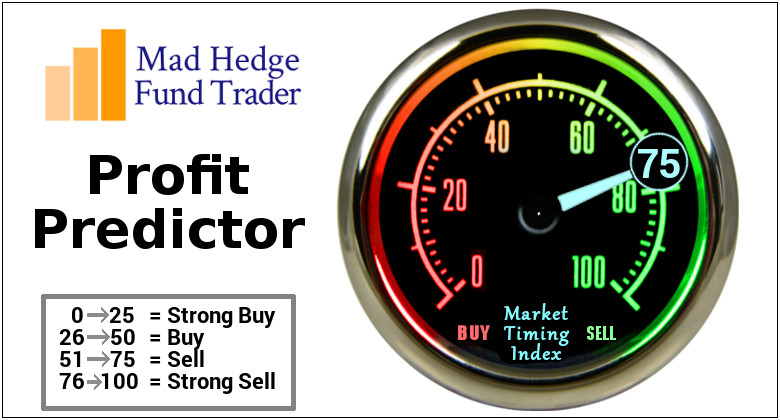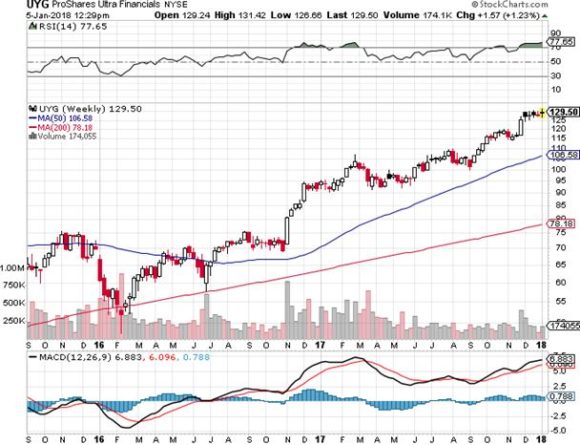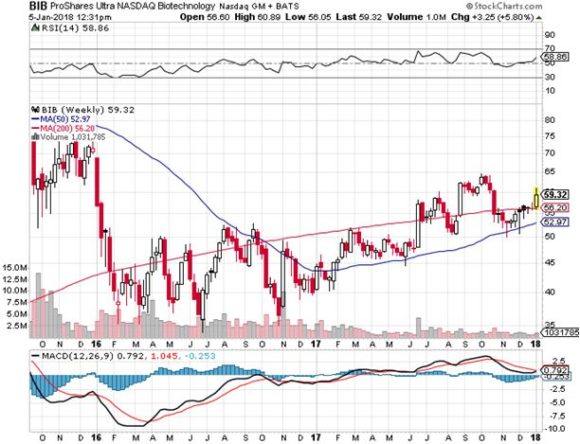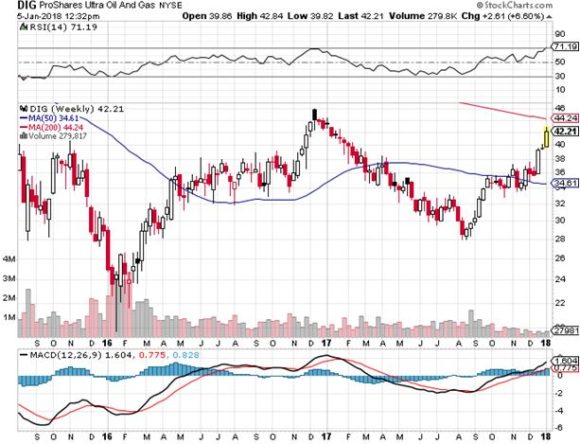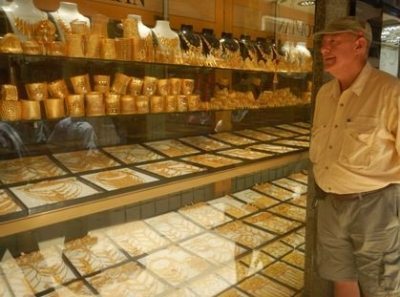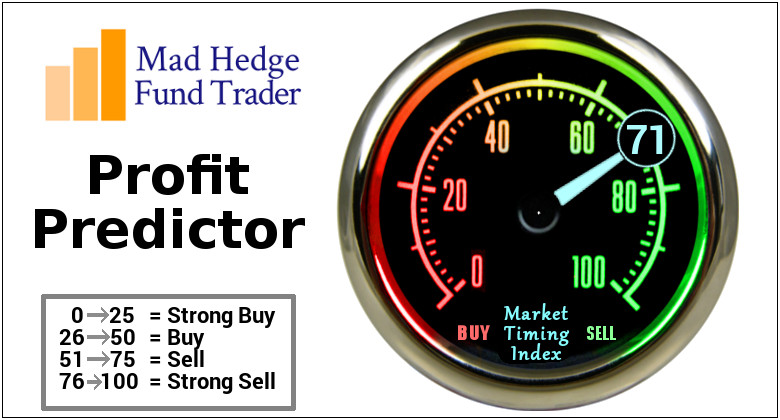
Global Market Comments
January 11, 2018
Fiat Lux
Featured Trade:
(NOW THE FAT LADY IS REALLY SINGING FOR TH BOND MARKET),
(TLT), (TBT), ($TNX), (GLD), (BITCOIN), (SPY),
(THE LIQUIDITY CRISIS COMING TO A MARKET NEAR YOU),
(TLT), (TBT), (MUB), (LQD),
(TESTIMONIAL)
The most significant market development so far in 2018 has not been the wild gyrations of Bitcoin, the nonstop rally in stocks (SPY), or the rebound of gold (GLD).
It has been the utter collapse of the bond market (TLT), which is now probing to one year lows.
I love it when my short, medium, and long-term calls play out according to script. I absolutely hate it when they happen so fast that I and my readers are unable to get in at decent prices.
That is what has happened with my short call for the (TLT), which has been performing a near perfect swan dive since the end of last year.
Those of you who ran the yearend risk and sold short early, well done! If you bought the ProShares Ultra Short 20+ Year Treasury Bond ETF (TBT), as I pleaded you to do you have made 10% in two weeks, with minimal risk. Those who bought the deep out-of-the-money LEAPS are up more like 100%.
The yield on the ten-year Treasury bond has soared from 2.04% in September to an intraday high of 2.60% today. It melted up the last 20 basis points only in the past week.
Lucky borrowers who demanded rate locks in real estate financings at the end of 2017 are now thanking their lucky stars. We may be saying goodbye to the 3% handle on 5/1 ARMS for the rest of our lives.
The technical damage has been near fatal. The writing is on the wall. A 3.0% yield for the ten year is now on the menu for 2018, if not 3.50%. 2019 is looking like 4.0%
This is crucially important for financial markets, as interest rates are the well spring from which all other market trends arise.
It is important to note that the yield spike to 2.60% brought us the first dip in stock markets in this year. In fact, stocks initially rise when rates are crawling off the bottom, as they are a sign of a robust economy and economic health.
And while tax cuts are terrible for bonds, they are unbelievably great for stocks. To use Warren Buffet's characterization, chopping the corporate tax rate from 35% to 21% means your take home has risen from 65% to 79%, an eye-popping increase of 21.54%.
That means the value of US stocks jumped by 21.54% overnight when the calendar turned the page from December to January. No wonder the market has gone up every day!
But longer term, and I'm thinking 18 months, rising interest rates trigger recessions and bear markets. So, make hay while the sun shines, and strike while the iron is hot.
You can put the blame in this mini-crash squarely on the new tax bill. After all, there is barely a scintilla of inflation in the economy anywhere, except in asset prices, which is normally what crushes bond prices.
Wiser thinkers are peeved that the promised bleeding of federal tax revenues is causing the annual budget deficit to balloon from a low of a $450 billion annual rate last year to $1 trillion this year.
As rates rise, so does the debt service costs of the world's largest borrower, the US government. The burden will soar in a hockey stick like manner, currently at 4% of the total budget.
What is of far greater concern is what the tax bill does to the National Debt, taking it from $20.5 trillion to $30-$40 trillion over the next ten years. If we get the higher figure, then we are looking not at another recession, but a real 1930's style depression.
Better teach your kids to drive for UBER early, as they are the ones who are going to have to pay off this gargantuan debt.
So what the heck are you supposed to do now? Keep selling those bond rallies and buying the stock dips, even the little ones. It will be the closest thing to a rich uncle you will ever have, if you don't already have one.
Make your year now, because the longer you put it off, the harder it will get.
Global Market Comments
January 10, 2018
Fiat Lux
Featured Trade:
(WHAT TO BUY AT MARKET TOPS?),
(CAT), ($COPPER), (FCX), (BHP), (RIO),
(EUROPEAN STYLE HOMELAND SECURITY),
(TESTIMONIAL)
Hey John and the MAD Team, here's an early Happy New Years!
You really nailed and keep nailing great reversals and trends that are just beginning to deserve a watchful eye. I nailed it today, so far, just buying the JPY pairs, and shorting the big bond, this past couple weeks?
I'm still a bit stuck on futures, but I realize the safety in your spreads is a lot smarter...Thx for all you know and for all you do.
Rod,
Alberta, Canada

Global Market Comments
January 9, 2018
Fiat Lux
Featured Trade:
(TRADING THE COMING EARNINGS HIT IN APPLE),
(AAPL), (GOOG), (ORCL), (MSFT),(PFE), (JNJ),
(PG), (GS), (RDS/A), (DDAIF), (BMWYY), (TLT),
(BIDDING MORE FOR THE STARS),
(SPY), (INDU), (NVDA)
By now, you are all long up the wazoo with the shares of Apple (AAPL).
How would you respond if I told you that Steve Jobs' creation is about to take a gigantic $33 billion earnings hit?
My guess is that you'd jump off the nearest bridge, slit your wrists, or at the very least, come down with a severe case of Montezuma's Revenge.
I can pretty much guarantee you that such a blockbuster announcement is headed your way in the coming weeks, if not days.
What the heck happened? Wasn't the dream scenario playing out for big tech, as predicted by the Mad Hedge Fund Trader for the past decade?
It is. But these days, things are complicated. Very complicated.
Buried in the tax bill passed with great haste at the end of 2004 is a provision that allows US companies to repatriate profits they have held overseas for the past 14 years. We're not talking small beer here.
The latest estimate for this figure is some $2.8 trillion, which is stashed away in the bank accounts of subsidiaries in Switzerland, the Cayman Islands, and Lichtenstein.
Five companies account for about one third of this total, including Apple (AAPL), Microsoft (MSFT), Pfizer (PFE), Cisco (CSCO), and Oracle (ORCL).
Oil companies, and other companies with major international business, like Johnson & Johnson (JNJ), Morgan Stanley (MS), and Procter & Gamble (PG), account for much of the rest.
Until now, if management wanted to bring this money back to the US they would have to count it as regular income and pay a stiff 35% tax rate. As of January 1, they can repatriate the funds and pay as little as 8%.
And here's the problem. These one-time-only tax payments have to be counted as a current expense. The amounts are so huge that they be enough to wipe out all present operating earnings.
For example, in Apple's case one estimate has the tax bill as high as $33 billion as the company brings home money from dozens of different foreign domiciles.
The writing is already on the way. Goldman Sachs (GS) has already said that it expects a tax hit of $5 billion, while Royal Dutch Shell (RDS/A) has come in at $2.3 billion.
The logic behind the tax cut is that repatriated money would be used to build more factories and hire more people in the good old USA.
Past repatriations prove that nothing of the sort will take place. In 2004 the Bush administration engineered just such a break. Some $312 billion was brought back and almost entirely invested in share buy backs and dividend payments.
This all goes back to my argument at the end of 2017 that one way or the other the entire $1.5 trillion tax package will end up in the stock market one way or the other. The market action since then totally vindicated that view.
So what to do about Apple? Here's where it really gets complicated.
Going forward, multinational companies now have to pay only a 10.5% on their foreign earnings and 21% for domestic earnings. It is a big incentive to close down US production facilities and ship them, and their jobs, overseas. You really have to wonder who thought this stuff up.
After all, does Apple want to pay the $14 an hour it gives low end workers in the US now, or $1 an hour to workers in India where its next big growth market is located?
Apple has been expected a reoccurrence of exactly this sort of tax windfall for at least a decade and has been reserving for it annually. But it thought the tax rate would be much higher, around 13%.
The net result is that by underestimating the generosity of future administrations it has over reserved for the prospect, meaning that instead of generating a monster $33 billion loss repatriation could create a surprise $3 billion profit!
So the bottom line here for Apple is that you hang on to the stock, where I have a price target of $200, and is now looking exceedingly conservative.
If for some reason the tax announcement DOES generate a big drop in the shares, jump in with both hands and buy it.
There are other weird quirks to the new tax law. Foreign companies operating in the US are also entitled to use the break. This means that if your US operations have been running at a loss, which is the case with Daimler Benz (DDAIF) and BMW (BMWYY), it generates a surprise $1 billion profit!
Tax breaks for Germans. Who ever thought of that? Talk about unintended consequences with a turbocharger.
In the meantime, attorneys and accounts are pouring over the new code harvesting hundreds of new tax loopholes no one ever thought possible. We will stay turned and keep you informed of the important ones, as taxes are a regular part of the coverage of this letter.
My bet is that unintended consequences are creating entire new industries that no one imagined possible. That is how an innocent tax break to help new technology startups with carried interest turned into the gargantuan trillion dollar private equity industry of today.
Here's another unintended consequence for you. The combined tax paid this year by repatriating companies should total around $235 billion. That will slow the current meteoric growth in the US budget deficit and means you short position in the bond market may take a little longer to play out.
Don't we live in a bizarre, upside down Alice in Wonderland world these days?
In the meantime, I'll be checking out commercial real estate in Switzerland, the Cayman Islands, and Lichtenstein.
Going to Visit My Money
Global Market Comments
January 8, 2018
Fiat Lux
Featured Trade:
(MARKET OUTLOOK FOR THE WEEK AHEAD, or FEEDING THE GEESE)
(THE PASSIVE/AGGRESSIVE PORTFOLIO)
"Feed the geese when they are quacking."
That is the motto I heard on a daily basis while running a trading desk at Morgan Stanley for a decade. What it means is that when investors want to buy stocks, you give them to them. And gave them we did.
There seem to be a lot of squawking geese flying around Wall Street these days, and records are being broken like clay pigeons on an Olympic skeet sheeting final.
It has been the strongest start to a year in two decades. Last year, the stock market rose every month for the first time in 70 years!
In the meantime, the sell signals have started popping up like poisonous mushrooms in the aftermath of a San Francisco Bay Area rainstorm.
This week, the inversion of the yield curve continued its relentless advance, like "The Blob" that ate New York. The two-year Treasury bill yield surpassed 1.98%, exceeding the S&P 500 dividend yield for the first time since 2009.
My friends over at Stockcharts.com have observed that we are now in the fifth (and final) Elliot Wave move up in a bull market that started in 2009.
Not that you should worry about any of this today. Just add it to your "I told you so" diary, which you can start showing to your friends in about 18 months.
I could go on and on. But I don't want to say anything that might prompt readers to sell shares prematurely. As I have noted many times, tops can take years to form, and early sellers always look foolish.
Traders were selling short the Nikkei average from 1985 onward, and dotcom stocks from 1995, both times with grievous results.
When you throw bad news on a market and it fails to go down, you buy the daylights out of it.
That was certainly the case when the December Nonfarm Payroll Report came out Friday at a flaccid 148,000. The headline unemployment rate held steady at 4.1%. This should have been an excuse to pause and let reason have its say.
Instead, feverish investors afraid of getting left behind took the Dow Average up some 225 points.
Health Care added a robust +31,000 jobs as we baby boomers besiege our Medicare covered doctors. Construction added +30,000 as Homebuilders race to meet a structural shortage of houses. Manufacturing picked up +23,000 jobs.
What was truly gob smacking was the loss of -20,000 jobs by Retail in what is normally the strongest month of the year. The year on year number is now a mind numbing -67,000. Macy's (M) has already announced the closing of another dozen stores this week. Clearly, the Amazonification of the economy continues full speed ahead.
My own trading performance continues to flat line at an all-time high at +58.08% on a trailing twelve-month basis. With virtually every asset class overbought after the New Year feeding frenzy, there is nary a sweet spot entry to be found. Just give it time.
After last week's fireworks on the jobs front, the coming week's economic data points will be painfully dull by comparison.
On Monday, January 8, at 3:00 PM EST, November Consumer Credit is published, a lagging monthly read on outstanding credit card balances, which have recently been rising.
On Tuesday, January 9 at 8:55 AM EST, we get the November JOLTS Report on job openings, which is already at all-time highs.
On Wednesday, January 10, the weekly EIA Petroleum Status Report is out at 10:30 AM EST.
Thursday, January 11 leads with the 8:30 EST release of the Weekly Jobless Claims.
On Friday, January 12 at 8:30 AM EST the December Consumer Price Index is out, a read on inflation. Given the accelerating improvement of technology the number may actually fall from last month's 2.2%.
Then at 1:00 PM, we receive the Baker-Hughes Rig Count, which lately has started to turn up again.
As for me, now that the New Year crazy days are winding down, I'll be headed up to Lake Tahoe to dig into serious research. I might even search for some inspirational leadership by reading Michael Wolf's new book, "Fire and Fury" and see what all the fuss is about, but only if I can tear myself away from the ski slopes long enough.
137 Years of S&P 500 Dividend Yields
What if you want to be a little more aggressive with your investment strategy, say twice as aggressive? What if markets don't deliver any year on year change?
Then you need a little more pizzazz in your portfolio, and some extra leverage to earn your crust of bread and secure your retirement.
It turns out that I have just the solution for you. This would be my "Passive/Aggressive Portfolio".
I call it passive in that you just purchase these positions and leave them alone and not trade them. I call it aggressive as it involves a basket of 2x leveraged ETF's issued by ProShares, based Bethesda, MD (click here for their link).
The volatility of this portfolio will be higher. But the returns will be double what you would get with an index fund, and possibly much more. It is a "Do not open until 2035" kind of investment strategy.
Here is the makeup of the portfolio:
(ROM) - ProShares Ultra Technology Fund - The three largest single stock holdings are Apple (AAPL), Microsoft (MSFT), and Facebook (FB). It was up 80.95% last year. For more details on the fund, please click here.
(UYG) - ProShares Ultra Financials Fund - The three largest single stock holdings are Wells Fargo (WFC), Berkshire Hathaway (BRK.B), and JP Morgan Chase (JPM). It was up 38.42% last year. For more details on the fund, please click here.
(UCC) - ProShares Ultra Consumer Services Fund - The three largest single stock holdings are Amazon (AMZN), Walt Disney (DIS), and Home Depot (HD). It was up 3.71% last year. For more details on the fund, please click here.
(DIG)- ProShares Ultra Oil & Gas Fund - The three largest single stock holdings are ExxonMobil (XOM), Chevron (CVX), and Schlumberger (SLB). It was DOWN 9.20% last year. For more details on the fund, please click here.
(BIB) - ProShares Ultra NASDAQ Biotechnology Fund - The three largest single stock holdings are Amgen (AMGN), Regeneron (REGN), and Gilead Sciences (GILD). It was up 40.49% last year, please click here.
You can play around with the sector mix at your own discretion. Just focus on the fastest growing sectors of the US economy, which the Mad Hedge Fund Trader does on a daily basis.
It is tempting to add more leveraged ETF's for sectors like gold (UGL), to act as an additional hedge.
There is also the 2X short Treasury bond fund (TBT), which I have been trading in and out of for years, a bet that long-term bonds will go down, interest rates rise.
There are a couple of provisos to mention here.
This is absolutely NOT a portfolio you want to own going into a recession. So, you will need to exercise some kind of market timing, however occasional.
The good news is that I make more money in bear markets than I do in bull markets because the volatility is so high. However, to benefit from this skill set, you have to keep reading the Diary of a Mad Hedge Fund Trader.
There is also a problem with leveraged ETF's in that management and other fees can be high, dealing spreads wide, and tracking error huge.
This is why I am limiting the portfolio to 2X ETF's, and avoiding their much more costly and inefficient 3X cousins, which are really only good for intraday trading. The 3X ETF's are really just a broker enrichment vehicle.
There are also going to be certain days when you might want to just go out and watch a long movie, like Gone With the Wind, with an all ETF portfolio, rather than monitor their performance, no matter how temporary it may be.
A good example was the flash crash, when the complete absence of liquidity drove all of these funds to huge discounts to their asset values.
Check out the long-term charts, and you can see the damage that was wrought by high frequency traders on that cataclysmic day, down -53% in the case of the (ROM). Notice that all of these discounts disappeared within hours. It was really just a function of the pricing mechanism being broken.
I have found the portfolio above quite useful when close friends and family members ask me for stock tips for their retirement funds.
It was perfect for my daughter, who won't be tapping her teacher's pension accounts for another 45 years, when I will be long gone. She mentions her blockbuster returns every time I see her, and she has only been in them for five years.
Imagine what technology, financial services, consumer discretionaries, biotechnology, and oil and gas will be worth then? It boggles the mind. My guess is up 100-fold from today's levels.
You won't want to put all of your money into a single portfolio like this. But it might be worth carving out 10% of your capital and just leaving it there.
That will certainly be a recommendation for financial advisors besieged with clients complaining about paying high fees for negative returns in a year that is unchanged, or up only 1%-2%. Virtually everyone has them right now.
Adding some spice, and a little leverage to their portfolios might be just the ticket for them.
It's Time to Spice Up Your Portfolio
Global Market Comments
January 5, 2018
Fiat Lux
Featured Trade:
(HAPPY DAYS ARE HERE AGAIN!),
(SPY), (QQQ), (TLT), (USO), (FXY), (FXE), (GLD), (ITB),
(THE DIFFERENCE BETWEEN MAD HEDGE FUND TRADER AND MAD DAY TRADER)

